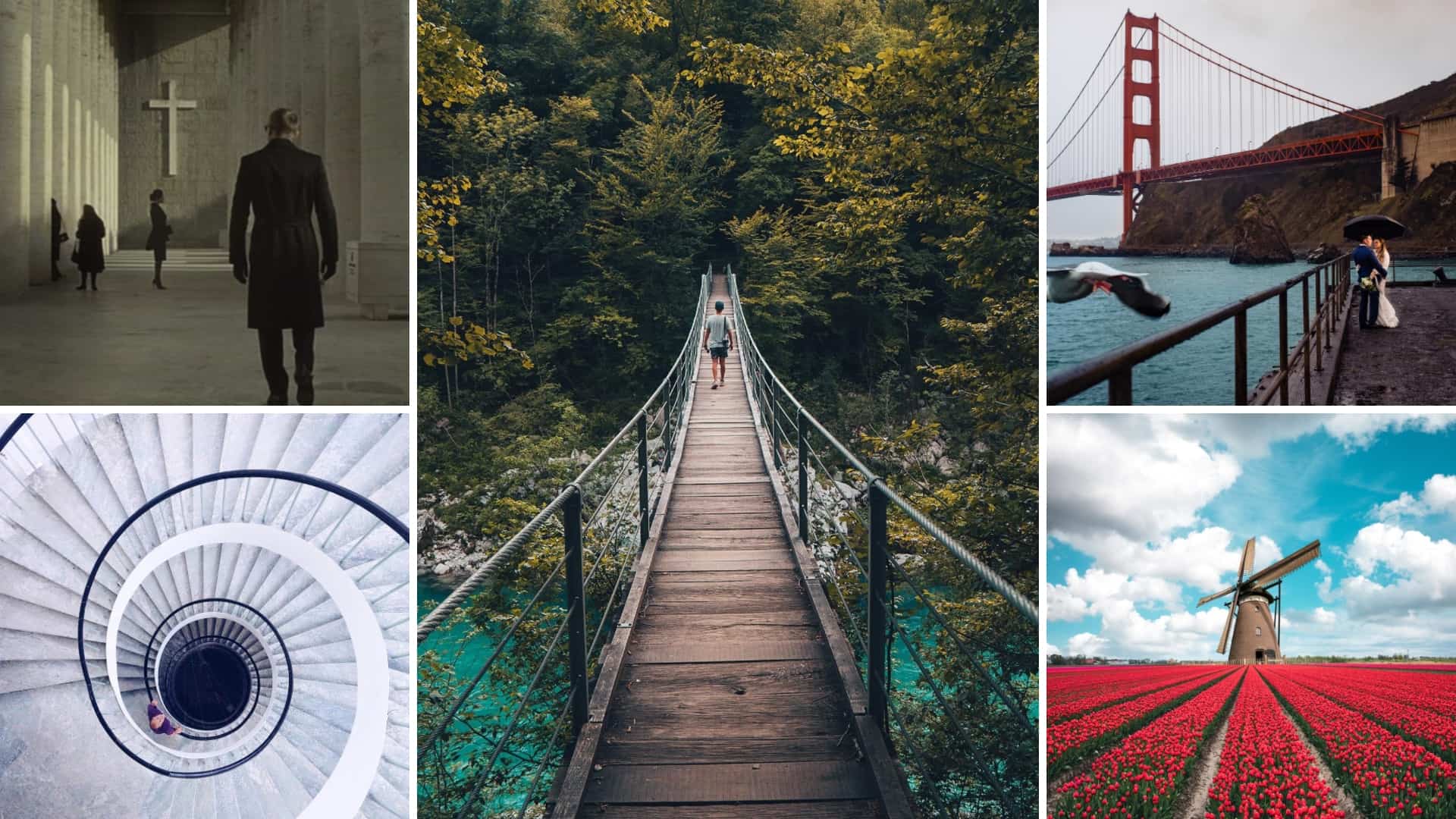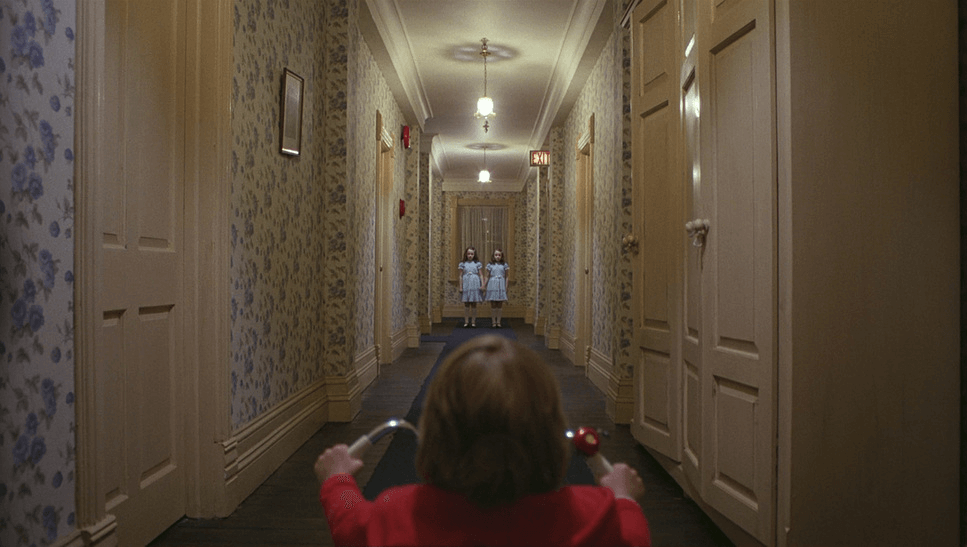Have you ever seen a photograph or a shot in a film and found your eyes wandering across the frame only to land at something significant? Odds are, leading lines were used to direct your attention. Photographers and cinematographers alike use various types of lines to lead the viewer’s eyes and tell a story through an image. What are leading lines and how can you use them? Let’s take a look at how this technique can benefit a shot’s aesthetic and function and how you can use them in your own compositions.
What are Leading Lines in Composition?
First, let’s define leading lines
Leading lines can be extremely distinct or extremely subtle. In some shots, you may not even notice that they are there, but they still guide your eye. Let’s take a look at the leading lines photography definition to better understand when they are used in a composition.
LEADING LINES PHOTOGRAPHY DEFINITION
What are leading lines?
Leading lines is a compositional technique that uses line shapes to direct the viewer's eye to a specific subject or detail. Line shapes within an image can be naturally occurring such as a river or treeline. They can also be artificial line shapes found in man made structures like bridges, roads, and fences. When a viewer looks at an image that utilizes lines, their eye is naturally drawn to the lines and where they lead. Photographers and cinematographers use this effect in their compositions to guide the viewer’s eye toward a specific area of the frame.
What are leading lines used for?
- Directing the viewer's eye
- Creating a focal point
- Establishing visual symmetry
Leading Lines Examples
Finding leading lines
Using leading lines in film and photography requires a creative eye. The first thing you must do is survey the scene and location you are shooting.
You may not find the perfect composition for these lines right away, but you’ll notice lines that, if you position yourself precisely, can make for a great composition. It’s also important to note that some lines are obvious and some are not quite as distinct.
Artificial leading lines photography
Artificial or man made structures produce the most distinct lines. Things like streets, fences, buildings, and bridges all have very distinguished features and lines that can be used in your compositions.
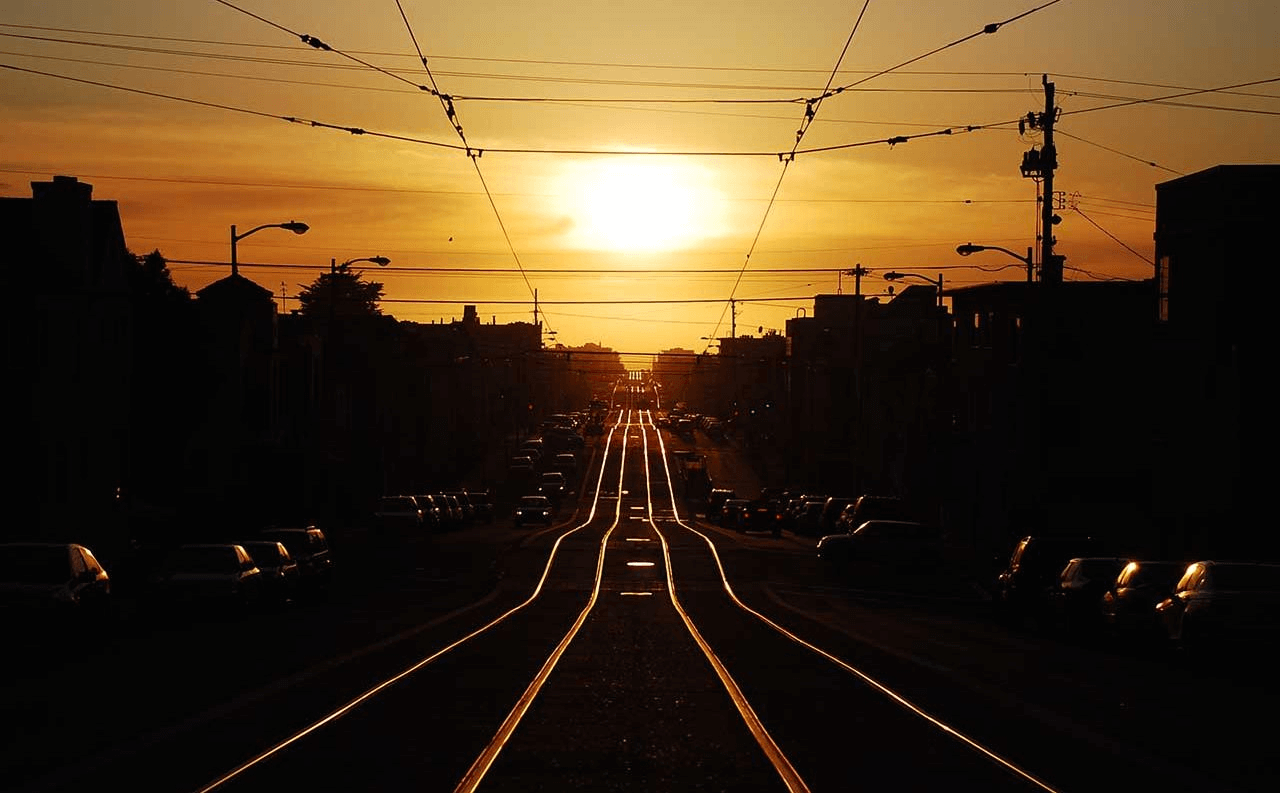
Man made • leading lines examples
In cinema, a big proponent of using manmade lines for his notoriously symmetrical compositions is none other than Wes Anderson.
Wes builds his film sets with these lines in mind for his compositions. But he also uses things like the horizon on a field to create them. Check out how this technique is a part of Anderson’s directing style and symmetrical composition in our director breakdown video below.
Wes Anderson Explains • Subscribe on YouTube
Natural leading lines photography
Leading lines found in nature are much less distinct, but equally effective. Naturally occurring lines can be found in rivers, tree lines, horizon lines, or mountain ridges.
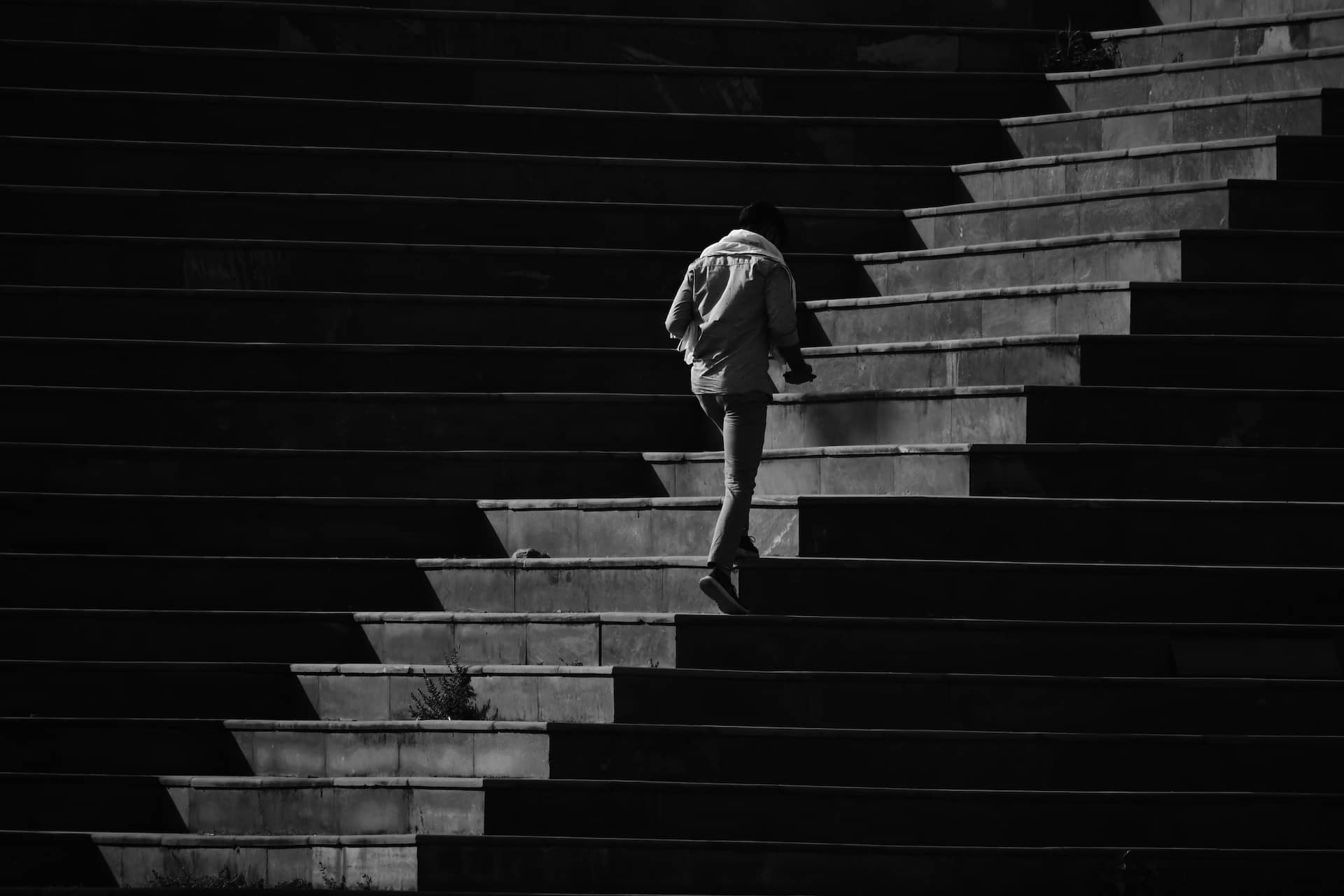
Black and White Photography • Leading lines examples
In cinema, director Terrence Malick and cinematographer John Toll found naturally occurring lines for unique compositions in South Pacific rainforests. In this shot, you can see how the patterns in the palm leaves as well as the brush line all converge on the subject.
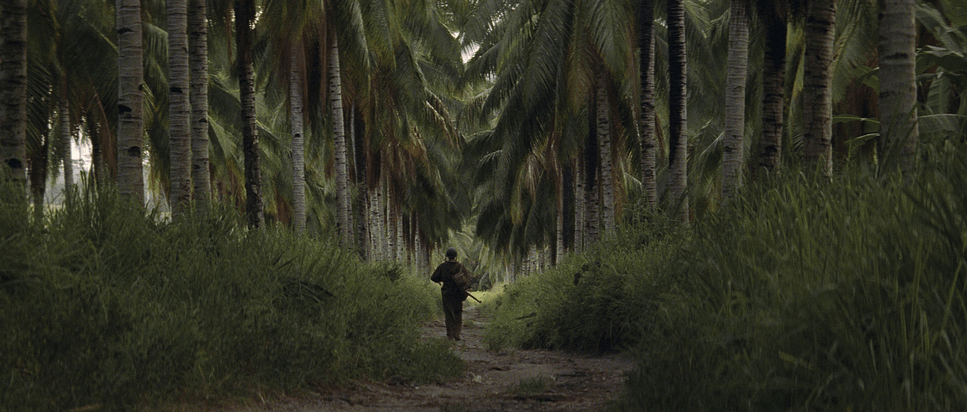
The Thin Red Line • Leading lines examples
Leading lines are partly found and partly created. Once you have identified a structure or scene that has linear compositions to work with, it is important to position the camera precisely to compose with lines.
How exactly do you stage the camera to use these lines effectively? This depends on your subject and the type of lines you are working with.
Related Posts
What are Leading Lines in Composition?
Types of lines
Leading lines photography is used because they effectively direct the viewer's eye toward a specific section of a frame. This means that the direction the lines are moving are important to how you frame your shot. What are leading lines in different directions used for? Let’s take a look at a few types of compositions from cinema and how they impact the overall composition.
Horizontal leading lines photography
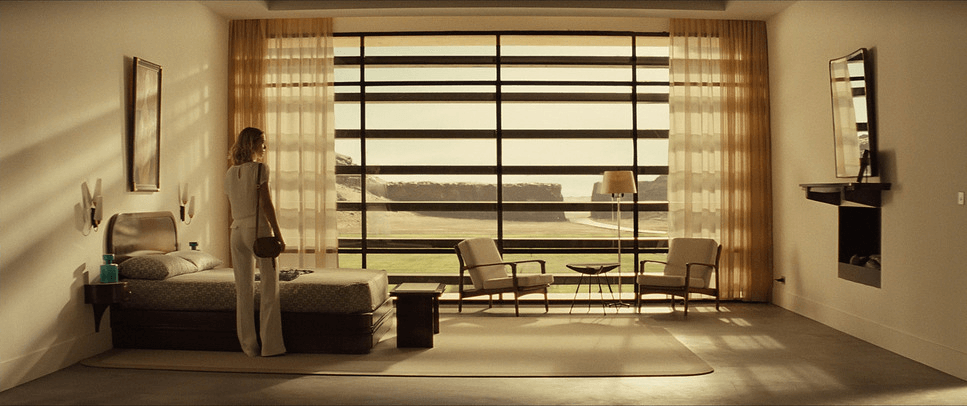
Spectre • Horizontal leading lines in art
Horizontal lines move across the frame from left to right. They are precisely horizontal and parallel with the top and bottom of the frame. In this shot from Spectre, horizontal lines are used to draw the eye toward our subject on the left side of the frame.
Vertical leading lines photography
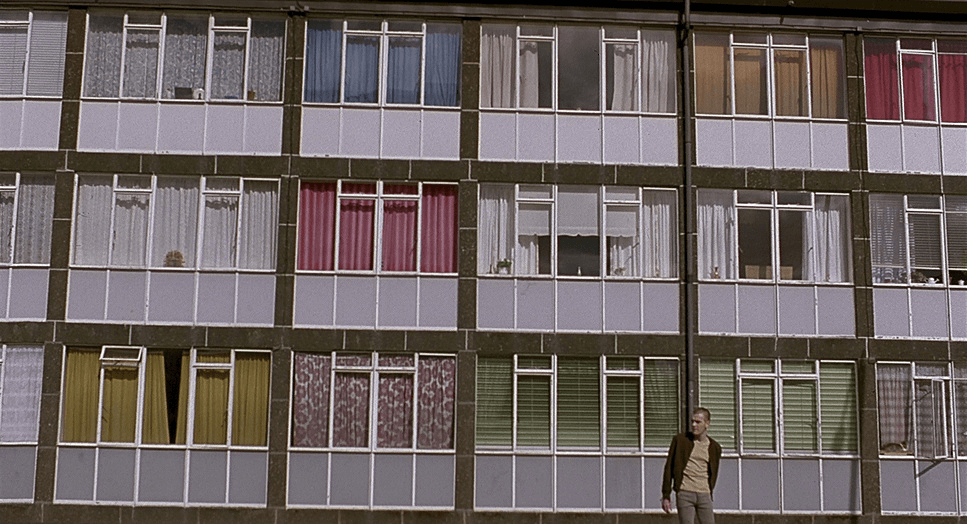
Trainspotting
The counterpart to horizontal lines are of course vertical lines. Vertical lines guide the viewer's eye upward or downward in the frame. This shot from the film Trainspotting uses the vertical lines from the architecture of the building to guide our eye downward toward the subject at the bottom of the frame.
Diagonal leading lines photography

The Hurt Locker • Diagonal leading lines composition
Diagonal lines are great at creating depth. They often move across the frame in a diagonal direction, but also deeper into the shot. This frame from The Hurt Locker uses diagonal lines of the grocery store aisle, shelves and lights to direct us deeper into the frame as well as toward the subject.
Curved leading lines composition
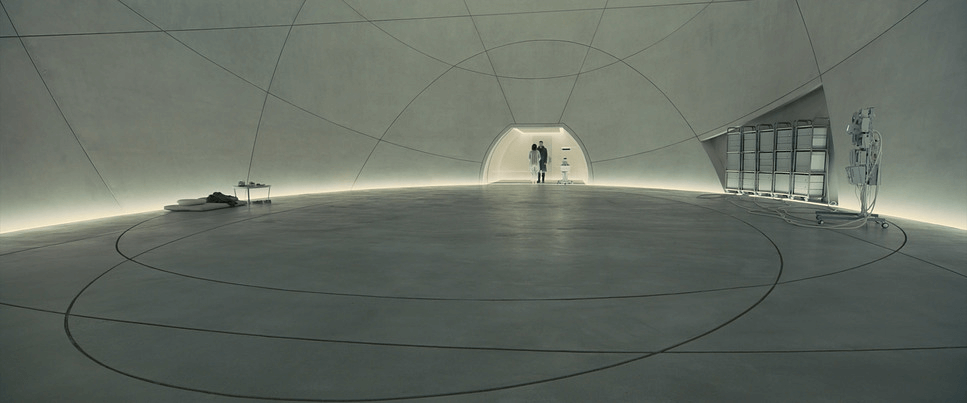
Blade Runner 2049 • What is leading lines in photography
Curved lines are a bit less common, but often found in natural line compositions or roads. They can insinuate more of a journey for a subject rather than leading us toward them entirely.
Converging leading lines composition
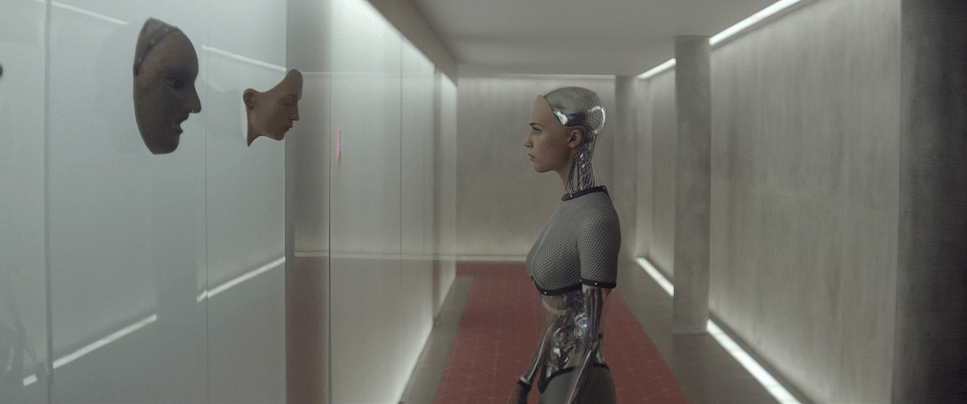
Ex Machina • Converging leading lines
Lastly, converging lines uses lines from various sides of the frame to converge toward one space or subject. Converging lines are extremely effective at focusing the viewer’s attention toward a specific point.
This shot from Ex Machina, one of the best thriller films of all time, uses the lines of the lights, walls, and hallway to converge onto the subject precisely.
Related Posts
What is Leading Lines in Photography
Composing with lines
As you can see, using lines can both create a more visually compelling shot, but it also has a great storytelling function.
If you are inspired to use lines in your photography or cinematography, here are a few steps to get you started.
1. Determine your subject
It’s always important to know who or what your subject is right off the bat. After all, your entire composition will be based on directing the viewer’s eye toward this subject.
In this shot from The Shining, one of Stanley Kubrick’s best films, establishing that the twins are the subject of the shot impacts the entire composition. Kubrick uses the lines of the hallway to guide our eye to them. Using leading lines to create symmetry is a distinct component of Kubrick’s directing style.
The Shining • Leading lines in art
2. Survey the scene
Next, survey the scene or location you are shooting. Find both artificial and natural lines to work with. Ask yourself, “How can I use these lines in my composition or position my subject within the composition of these lines?”
3. Position the camera
Like we mentioned earlier, creating a great composition with lines is first finding the lines in your scene and then positioning the camera precisely.
Find the perfect position for your camera that frames the lines to perfectly lead to your subject.
4. Use various types of lines
Don’t be afraid to use various lines in your composition. Using both horizontal lines and vertical lines can create unique compositions and be more effective at directing the viewer’s focus.
Take this shot from Inception for example. Director Christopher Nolan uses both the horizontal lines on the ground and the vertical lines in the background to guide our eye toward the subjects of the shot.
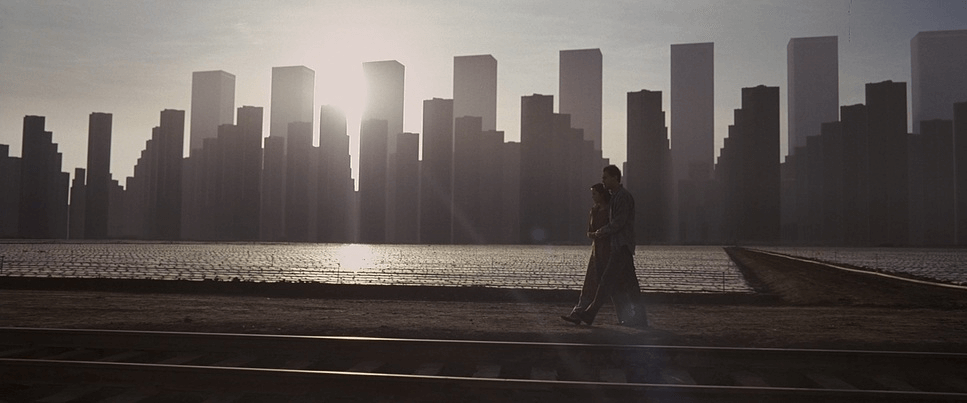
Inception • What are leading lines used for
Leading lines are a tool to use within compositions. Remember that extremely distinguished lines can create memorable visuals and a distinct style. However, don’t be afraid to use lines in more subtle ways.
Leading lines are an effective way to guide the viewer’s eyes and attention toward something specific. Use this to your advantage to tell a story.
Subtle uses of lines can have tremendous impact on how an audience perceives a shot. Develop your eye to find use of lines in both distinct and subtle ways and your compositions will undoubtedly thank you for it.
Up Next
Rules of Shot Composition in Film
If you found the function of lines useful for creating effective shot compositions, then you need to check out our next article on the rules of shot composition in film. We analyze how various types of techniques such as the rule of thirds, symmetry, and depth of field all impact a shot.
Up Next: Composition in Film →
Showcase your vision with elegant shot lists and storyboards.
Create robust and customizable shot lists. Upload images to make storyboards and slideshows.
